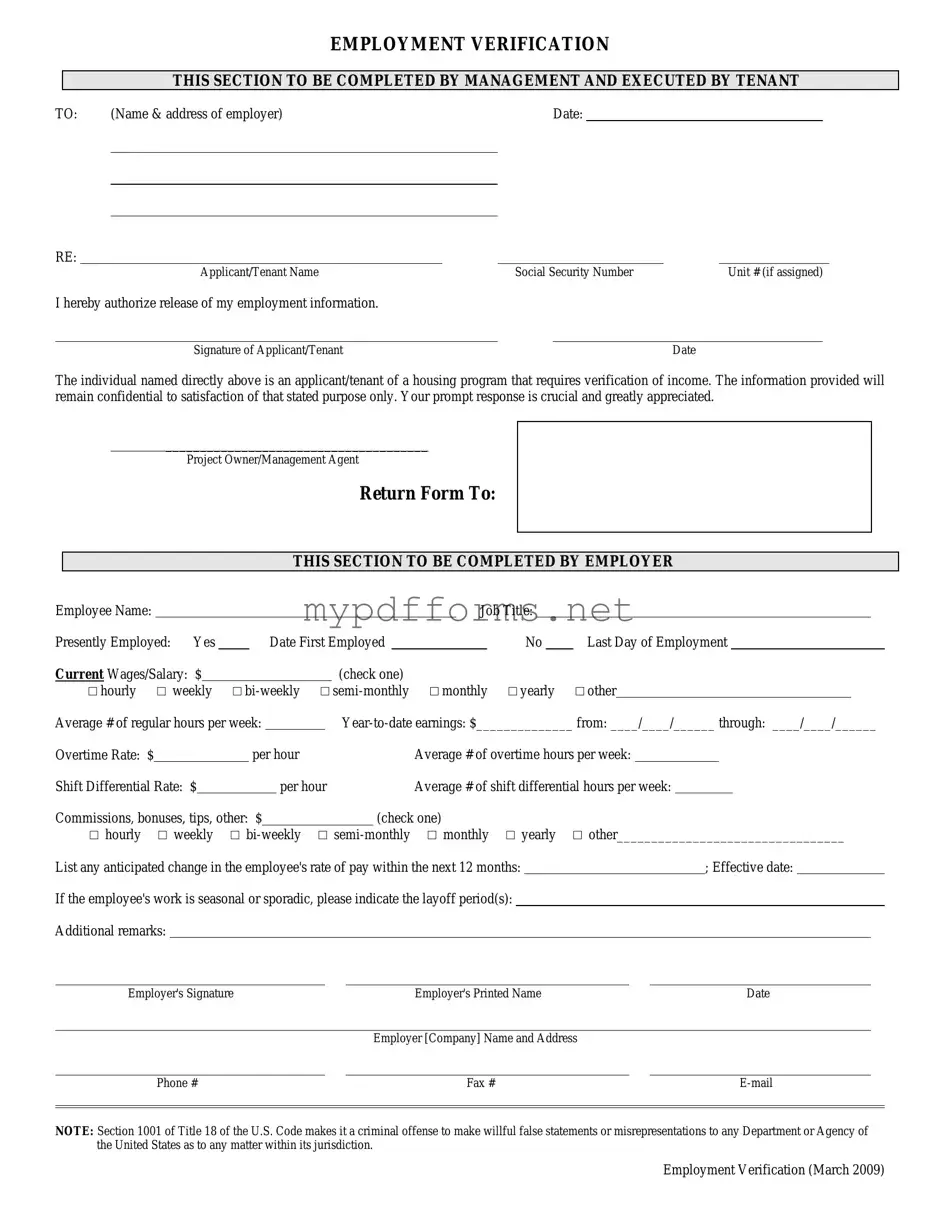The Employment Verification Letter is a document often used by employers to confirm an employee's job status, salary, and length of employment. Similar to the Employment Verification Form, this letter provides proof of employment for various purposes, such as applying for a loan or renting an apartment. It typically includes details like the employee's job title, start date, and current salary, making it a reliable source of information for third parties who need to verify employment history.
A Pay Stub serves as another crucial document that can verify employment. This document outlines an employee's earnings, deductions, and net pay for a specific pay period. While it differs from the Employment Verification Form in format, it still provides essential information about employment status and income, which can be useful for financial institutions or landlords assessing an individual's financial stability.
The IRS Form W-2 is a tax document that employers send to their employees and the IRS at the end of the year. It summarizes an employee's annual wages and the taxes withheld. Like the Employment Verification Form, the W-2 serves as proof of income, but it is specifically focused on tax purposes. It can be used to confirm employment and income when applying for loans or other financial assessments.
An Offer Letter is another document that shares similarities with the Employment Verification Form. This letter outlines the terms of employment for a new hire, including job title, salary, and start date. While it is used primarily at the beginning of employment, it can also serve as a reference point for verifying employment when needed, especially if the employee is transitioning to a new job.
The Job Offer Acceptance Letter is a document that confirms an individual's acceptance of a job offer. Similar to the Employment Verification Form, it outlines the agreed-upon terms of employment. While it is primarily used for record-keeping, it can also serve as proof of employment when the individual begins working, thereby establishing a formal employment relationship.
For a complete overview of the essential Motor Vehicle Bill of Sale requirements, visit the following link: essential Motor Vehicle Bill of Sale.
The Employment Contract is a more formal document that outlines the terms of employment, including job responsibilities, salary, and duration of employment. It serves as a binding agreement between the employer and employee. Like the Employment Verification Form, it provides clarity about the employment relationship, ensuring both parties understand their obligations and rights.
The Background Check Authorization Form is often used by employers to obtain permission to conduct background checks on potential employees. While it does not verify employment directly, it is related to the employment verification process. Employers may use information gathered during background checks to confirm details provided in the Employment Verification Form, ensuring that candidates meet the necessary qualifications for the position.
